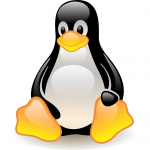 Let’s face it: Linux is not a graphical environment. Linux revolves around a simple text-only interface commonly referred to as “the command line”.
Let’s face it: Linux is not a graphical environment. Linux revolves around a simple text-only interface commonly referred to as “the command line”.
That being said, one unique feature of Linux is the veritable multitude of desktop environments (the Graphical User Interface parts) that can be run on most distributions.
Each desktop environment (DE) has different graphical elements, layouts or functionality that set them apart.
So, you may be thinking: Wow, this girl really must have tried them all!
*Whistles innocently at the sky.*
I’ve tried two. Yes, that’s right, two. T-w-o, 2, two.
It gets worse: One of those two desktop environments I tried out over ten years ago, and I barely remember it. I’m sure that it has changed (and improved) greatly since that time.
My philosophy — one that my Dad taught me early on in life — is, as he rather eloquently phrases it: If it ain’t broke, don’t fix it.
Ok, sure. He uses KDE, so less work for me: KDE it is.
As such, tackling this topic today is my way of introducing various desktop environments to myself, as much as to anyone else.
The DEs that I’ve chosen for this discussion are considered the some of the most popular ones available at this time.
Gnome
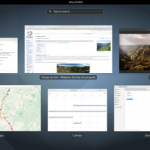 Gnome is — arguably — one of the two most widely-recognized desktop environments.
Gnome is — arguably — one of the two most widely-recognized desktop environments.
Gnome is “designed to put you in control and bring freedom to everybody”. It is developed by an international group of contributors.
Gnome features a left-side task-bar and is full-customizable (with extensions).
Visit the Gnome website.
Unity
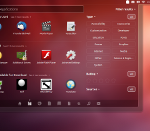 The Unity desktop environment was developed by the developers of Ubuntu, and as such is Ubuntu’s default DE.
The Unity desktop environment was developed by the developers of Ubuntu, and as such is Ubuntu’s default DE.
Unity is not a complete desktop environment on its own; it is designed as a shell of Gnome, using existing Gnome applications, but changing the “user experience”.
Unity features a left-side-docked launcher and a top-bar menu with its own desktop search utility.
Visit the Unity website.
Cinnamon
 Cinnamon was originally developed by Linux Mint as a fork of Gnome, but evolved into a separate desktop environment as time went on.
Cinnamon was originally developed by Linux Mint as a fork of Gnome, but evolved into a separate desktop environment as time went on.
Cinnamon is stable, and is in the process of adding features as it grows. It is designed to look like and act as a traditional desktop environment, as opposed to Gnome’s left-side-launcher and various differences.
Visit the Cinnamon GitHub page.
Mate
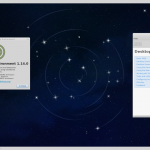 Mate is pronounced Ma-Tay like the Spanish plant (hierba mate) that it is named after.
Mate is pronounced Ma-Tay like the Spanish plant (hierba mate) that it is named after.
Mate was developed based on the Gnome 2 design, after Gnome 3 was released with a new interface. Many users preferred the old interface, and Mate grew in popularity.
Visit the Mate website.
KDE
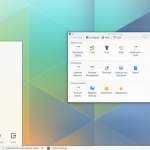 KDE is the other of the — arguably — two most widely-recognized desktop environments.
KDE is the other of the — arguably — two most widely-recognized desktop environments.
The latest version of KDE, Plasma 5, boasts many improvements over previous versions, including better graphics and modernized launchers.
KDE is fully-customizable and features a bottom-mounted task-bar with similarities to the Microsoft Windows operating system.
Visit the KDE website.
Xfce
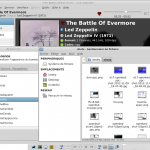 Xfce is almost universally described as a fast and lightweight desktop environment similar to Gnome 2, with a traditional desktop design.
Xfce is almost universally described as a fast and lightweight desktop environment similar to Gnome 2, with a traditional desktop design.
Xfce balances performance and functionality rather well for many purposes, such as for use on older PCs, or in the case that resources need freed up for uses other than the GUI.
Visit the XFCE website.
LXDE
LXDE is also known as a fast, lightweight desktop environment, but with an added bonus of being energy-saving, which makes it ideal for use on mobile PCs (laptops, etc.) that may often run on battery.
For all that it is designed to be lightweight, the standard layout (task-bar, etc.) is not compromised. LXDE bundles its own lightweight applications for files/text/images/terminal/etc.
Visit the LXDE website.
Other Desktop Environments
There are many other Linux desktop environments available, such as Pantheon, Enlightenment, Sugar, Deepin, Xmonad, Ambient, Razor-qt, CDE, EDE, UDE, InnovaDE, Elokab, Trinity, Mezzo, Openbox, Awesome, Budgie, etc.
I have yet to find a fully comprehensive list or resource for all available desktop environments. Any suggestions?
Conclusion
If you’re not sure which desktop environment to start with, the best option may be your chosen Linux distro’s default.
Otherwise, well, I obviously recommend KDE; the learning curve is minimal, and it’s default file manager, dolphin, is top-notch.
